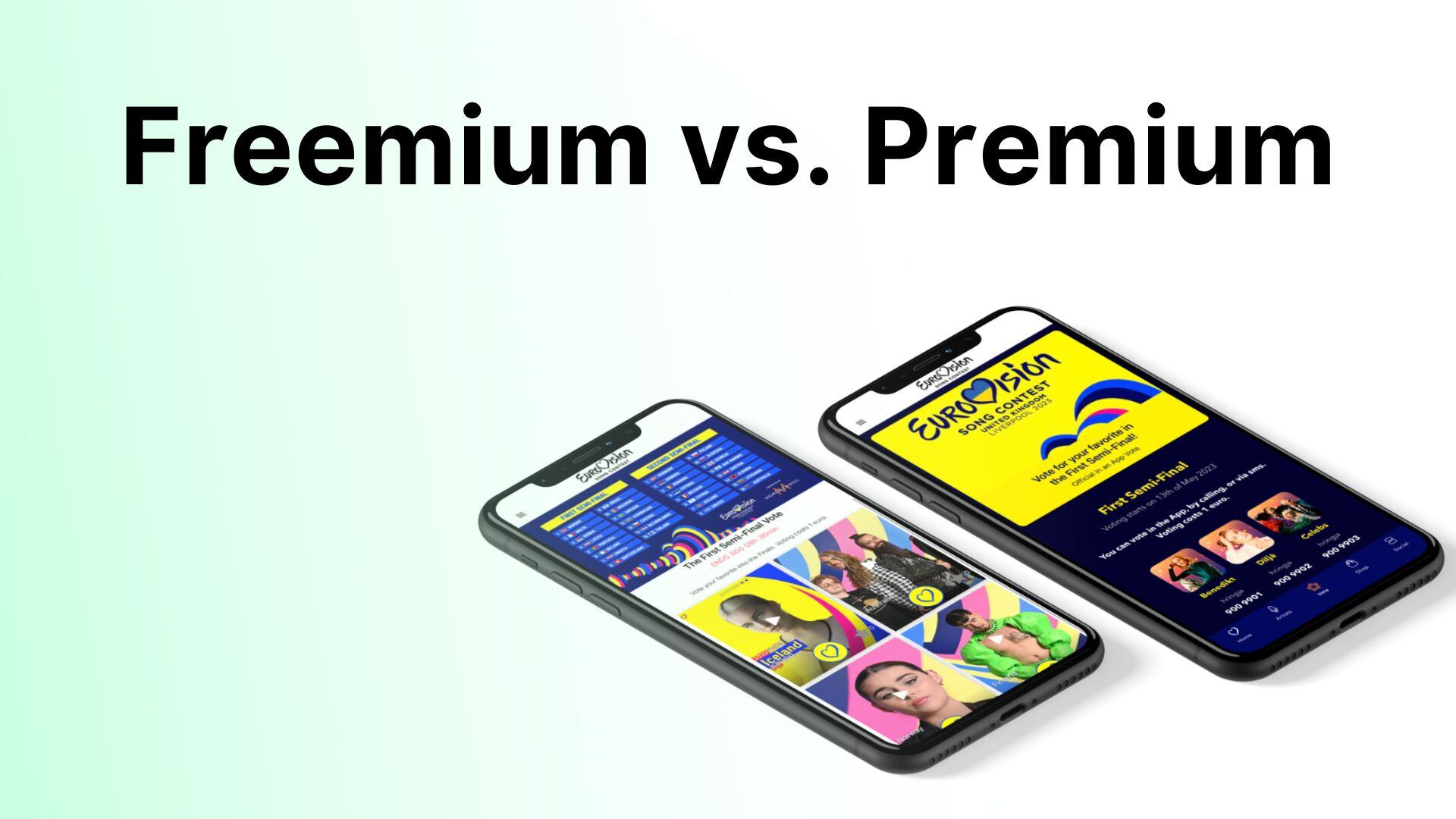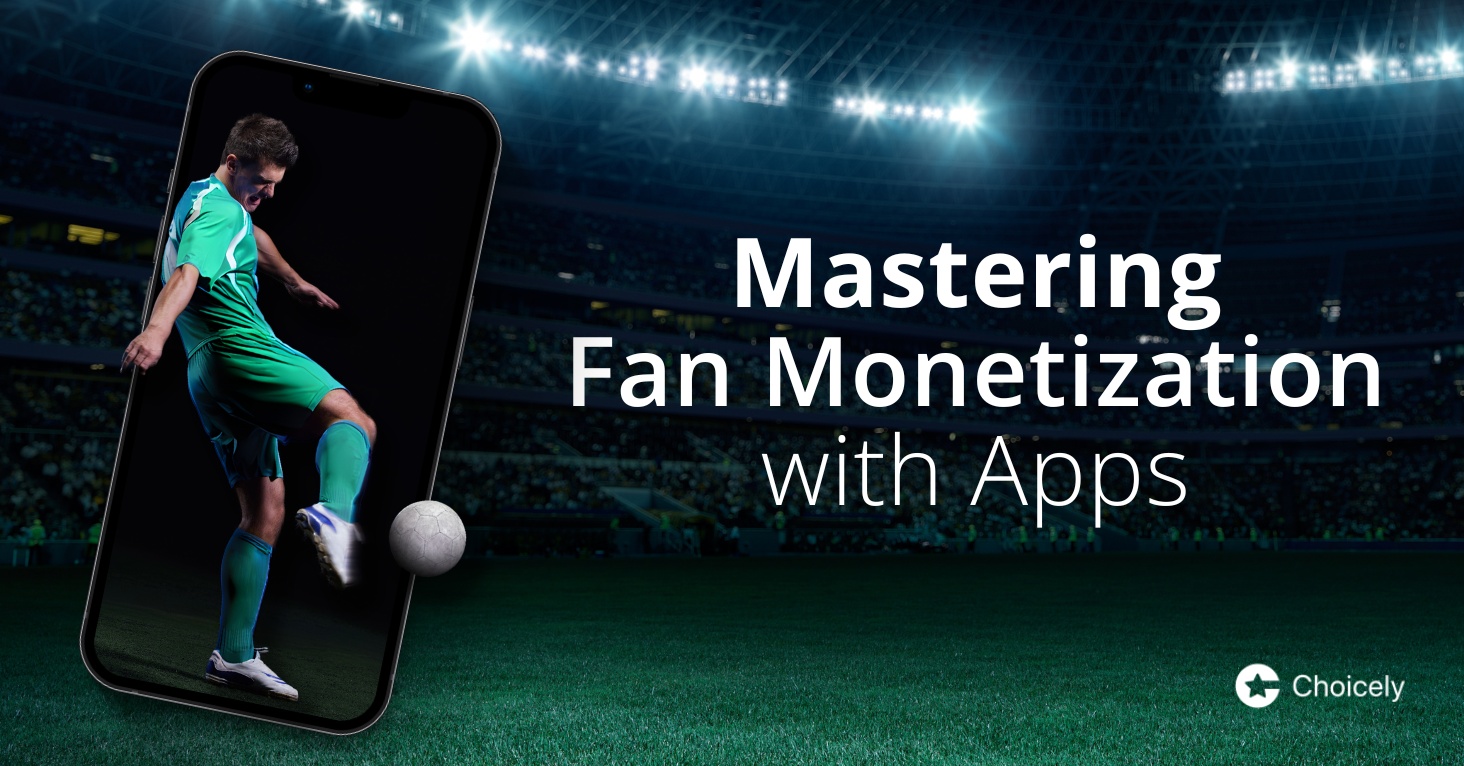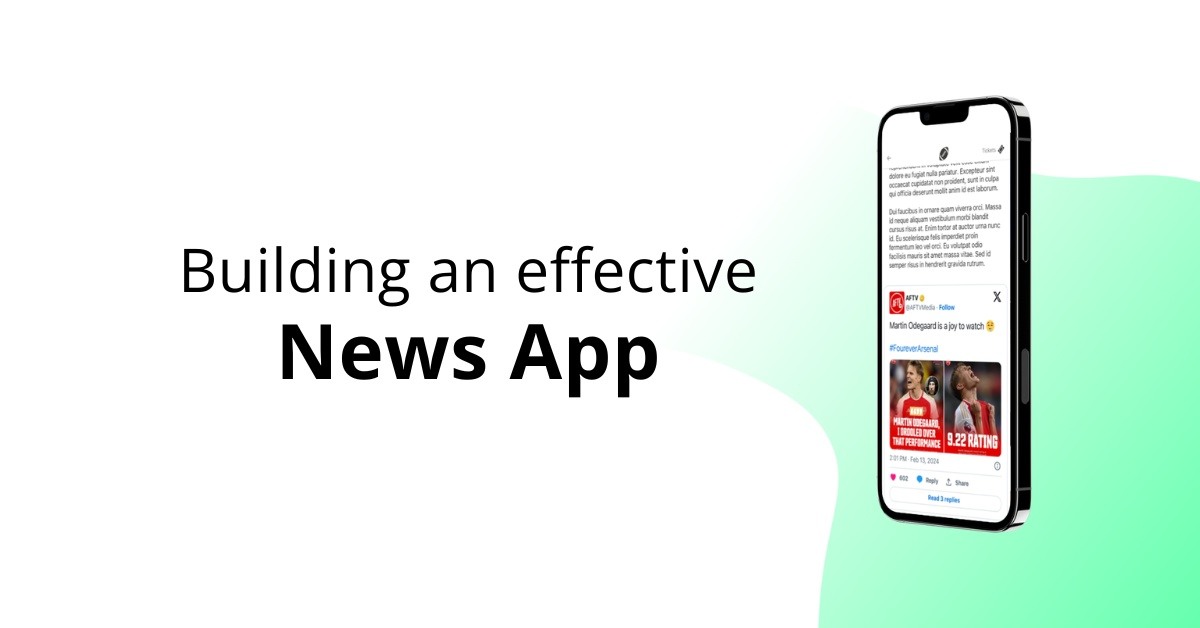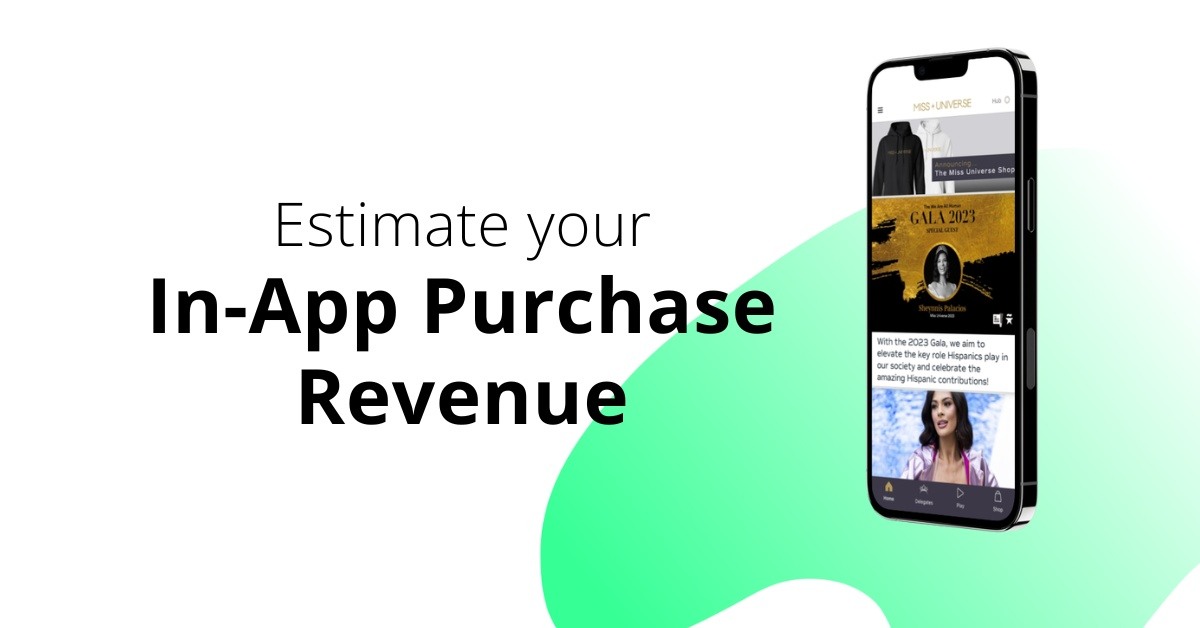- App Platform
- Pricing
- References
-
Apps as a Service
-
Mobile App as a Service
Get a tailored app done for you
-
 Convert website into app
Convert website into appGet an app prototype in 2 minutes
-
Contest Voting App
Boost your voting contest with an app
-
Pageant Voting System
Create a flashy app for your pageant
-
Fan engagement app
Grow your fan engagement with an app
-
News app
Grow engagement with your readers
-
Event app
Engage your attendees
-
 TV Show app
TV Show appGrow interactions with your viewers
-
- Resources
- Work With Us
app monetization

Freemium vs. Premium Mobile Apps: A Deep Dive into Monetization Models
Freemium or premium: which model suits your mobile app? Learn the key differences of these monetization models and decide what’s best for your audience.
Kaius, CEO
Sep 10, 2024

Should you charge for your mobile app, or offer it for free?
The two app monetization strategies – premium and freemium – are vastly different. They will largely affect the revenues of your app, and how you approach it overall.
Which strategy to choose then?
The decision is not always straightforward, and in this blog post we will explore different aspects of what goes into each model.
We’ll dive into these sections:
- Premium Apps
- Freemium Apps
- Freemium vs. Premium: A Direct Comparison
- Conclusion: Should I Make My App Free or Paid?
By the end, you’ll have a clearer idea of which model best suits your app’s goals and audience.
Premium Mobile Apps
In this section, we’ll cover the basics: what defines a premium app, typical pricing, the pros and cons, and earning potential. This insight can help you decide if the premium route aligns with your goals.
What is a Premium App?
A premium app is one that requires users to pay upfront before downloading it. Unlike freemium apps that offer free access with optional paid features, premium apps charge a one-time or subscription fee for full access to all content and features from the start.
These apps typically target users who are looking for high quality experiences and are willing to invest in an app that they trust will meet their needs. Premium apps often emphasize value, reliability, and a polished user experience, aiming to attract a dedicated audience.
How much does a premium app cost?
The typical price range for premium apps is close to free apps: between $0.99 and $9.99. According to Clevertap in 2019, 86% of premium apps in the App Store and 76% in Google Play cost less than $5.
The average subscription price of mobile apps was $10.20 a month, and $49.65 over six months. However, this includes subscriptions for both premium apps and freemium apps that include subscriptions.
Premium apps can have a one-time charge, which unlocks all the app’s features, forever. They can also be sold as a subscription service where the app is paid for on a recurring basis, like monthly or yearly. App owners can also offer their app as premium, but still containing extra paid features like in-app purchases. This model is called “paymium”.
Typical app development costs vary largely as well, from $16 000 to $500 000 according to online sources. However, there are examples of apps that go below and above this range, too.
What are the advantages and disadvantages of premium apps?
Premium apps offer a reliable revenue stream through upfront payments, but the upfront cost can limit user adoption. You’ll need to weigh the benefits of early compensation against a potentially smaller audience.
You get paid immediately when a user downloads your app. This upfront payment ensures a consistent revenue stream, allowing you to reinvest in development. A premium price tag often signals higher quality, which can attract users looking for a superior experience. Additionally, because users are paying, you’re less reliant on in-app purchases or ads, allowing for a more seamless, distraction-free experience.
Placing your app behind a paywall significantly limits its reach. Many users prefer to try an app for free before committing to a purchase. Premium apps can also face higher user expectations, which means you’ll need to deliver a polished, feature-rich experience right out of the gate.
How many people pay for premium apps?
There is very little data on apps that operate on the premium model, specifically. However, there is a large market for premium app features altogether.
According to Statista, 17,3% of global internet users pay for a mobile app each month (in Q3/2023). However, this number includes both premium and freemium apps with subscriptions.
Out of all apps, only 3–5% are actually categorized as premium apps.
According to an earlier statistic from Think With Google, only 1 in 2 people have ever paid for a mobile app. However, this estimate dates back to the year 2016, and both the mobile app industry and consumer behavior have evolved rapidly since then.
According to a market analysis, Americans spent $20.78 a month on app subscriptions in late 2020. App subscriptions rose during the COVID-19 pandemic, and especially younger generations have increased their usage of mobile subscriptions.
Want to estimate the costs and revenues of your app? This Google Sheet is for you:
Freemium Apps
Freemium apps have become a dominant model in the mobile market. If you're considering this model, it’s crucial to understand how freemium apps make money, why they’re so successful, and the potential challenges you may face in converting free users to paid customers.
What is a Freemium app?
A freemium app is a mobile application that offers a free basic version with limited features, while encouraging users to unlock additional content or advanced functionality through in-app purchases or subscriptions.
This model allows users to try the app without any upfront cost, which can drive high download rates. The goal of freemium apps is to attract a large user base and then monetize them by displaying ads or offering compelling premium features that enhance users’ experience.
A variation of freemium is an app that provides a free trial. In a free trial, the user can use all the app’s features for free until the end of the trial period. After that, the user needs to pay to gain access to the app.
Another version of this model is a reverse free trial, where the user can initially use all the features of the app during a trial period. After the free trial, they can use a stripped down version of the app unless they pay for the full version.
How do free apps make money?
Free apps make money by offering in-app advertisements, purchases, or subscriptions, to name a few examples. Ads generate revenue based on impressions, clicks, or user engagement, while in-app purchases allow users to buy extra features or content. Subscriptions provide recurring income as users pay for premium services over time. Read more about app monetization models in our blog post.
While free apps often reach a large audience, their profitability depends on how effectively they monetize their user base. If you can balance user engagement with well-placed monetization strategies, free apps can be highly profitable, especially when a large enough percentage of users convert to paying customers or see ads regularly.
Why is the freemium model so successful?
The freemium model thrives because it lets users try the app for free, giving them a chance to experience its value firsthand before committing to payment. This approach lowers the barrier to entry, attracting a larger user base.
By showcasing what the app can do without upfront costs, you build trust and demonstrate its value. Users who find value are more likely to upgrade to premium features. This model capitalizes on the principle of "try before you buy," making it easier for you to convert users into paying customers.
What are the cons of freemium?
The freemium model does come with challenges. One major drawback is the low conversion rate of free users to paying customers. On average, less than 0.1 percent of users who actively engage with a free app will opt for a paid subscription. Additionally, you'll need a substantial user base to generate significant revenue, as only about 2.4–5.9 % of app users become paying customers overall – with all paid options combined. This means that while attracting users might be relatively easy, converting them to paid users can be difficult and requires effective monetization.

What are the most effective strategies for converting freemium mobile app users to paid?
To convert freemium users to paid, focus on delivering value and strategic upgrades. Here's a streamlined approach:
- Understand users’ needs and segment them based on behavior, then offer personalized upgrades.
- Choose the right monetization tactics like in-app purchases, subscriptions, or ad removals.
- Communicate products and upgrades with push notifications.
- Showcase the benefits of your products, use consistent CTAs and make paywalls clear.
- Engage users with a valuable free app while emphasizing the additional value of paid features.
This combination ensures you guide users from free to paid by providing the right incentives, clear communication, and well-timed offers.
Freemium vs. Premium: A Direct Comparison
So how do freemium and premium models stack up against each other?
In this section, you'll discover the key differences between these two approaches to app monetization. We’ll explore profitability, popularity, and how each model impacts user behavior.
Whether you’re choosing a monetization strategy for your app or just evaluating options, understanding these distinctions will help you make an informed decision. Let’s dive in!
What is the difference between Freemium and Premium apps?
Freemium and premium apps differ in their payment structures. Freemium apps are free to download and use, offering basic features at no cost while charging for additional premium features or content. This model attracts a larger user base with the chance to upgrade.
In contrast, premium apps require an upfront payment for download, providing full access from the start. This approach targets users who are willing to pay for quality upfront.
Which is more profitable, Freemium or Premium?
Freemium apps typically generate more revenue than paid apps. It can take more time to build up to profits.
Freemium apps can be more profitable over time, given they successfully convert a significant portion of users to paid features. The freemium model can generate ongoing revenue through in-app purchases or subscriptions, potentially yielding higher long-term returns.
However, premium apps provide immediate income through one-time purchases, which can be lucrative if your app offers high value.
Are free apps more popular than paid apps?
Yes, free apps are generally more popular than paid apps. As of March 2024, paid apps make up a small fraction of the market—only 4.9% on the Apple App Store and 3.1% on the Google Play Store.
This dominance of free apps is largely due to their easy accessibility. Users are more likely to download and try free apps, which can lead to higher user numbers and potential revenue through in-app purchases or ads.
Video: How to build iOS and Android apps with Choicely
Should I make my app free or paid?
Whether you should make your app free or paid depends on your goals and target audience. Freemium apps attract a large user base and allow users to experience the app before paying, but they rely on in-app purchases or subscriptions for revenue. Premium apps, on the other hand, provide an immediate revenue stream but limit your audience due to upfront costs.
If your app serves a broad audience and benefits from scale and engagement – like an entertainment show or sports fan media – a freemium model may be more effective. For niche apps, like specialized educational apps or professional services, the premium model could better position your app as high-quality and exclusive.
In case you already have a strong existing audience, and you’d like to cater them with a paid, exclusive service, a premium app could be a good fit.
For some, a freemium or free trial with a paid subscription could be the best of both worlds. You can initially offer a free app to draw users om, then provide a premium subscription for advanced features. Ultimately, the choice depends on your app's market, the purpose of the app, and how you plan to monetize it long-term.
More often than not, freemium apps are the better option because of their ability to reach more users and ultimately monetize them. For freemium apps, there are plenty of good monetization opportunities to choose from.
Build your app with Choicely
Build a high quality mobile app without coding skills, with Choicely. Try it for free today!
Keep reading, here are some similar posts

Mobile apps are a fantastic way to interact with your fans. Today you can build a high quality fan app at a...

"News app" is one of the most popular app categories in the world. Out of all the apps in Apple App Store,...



